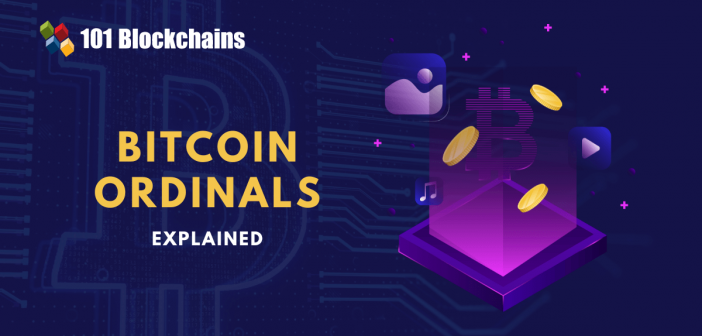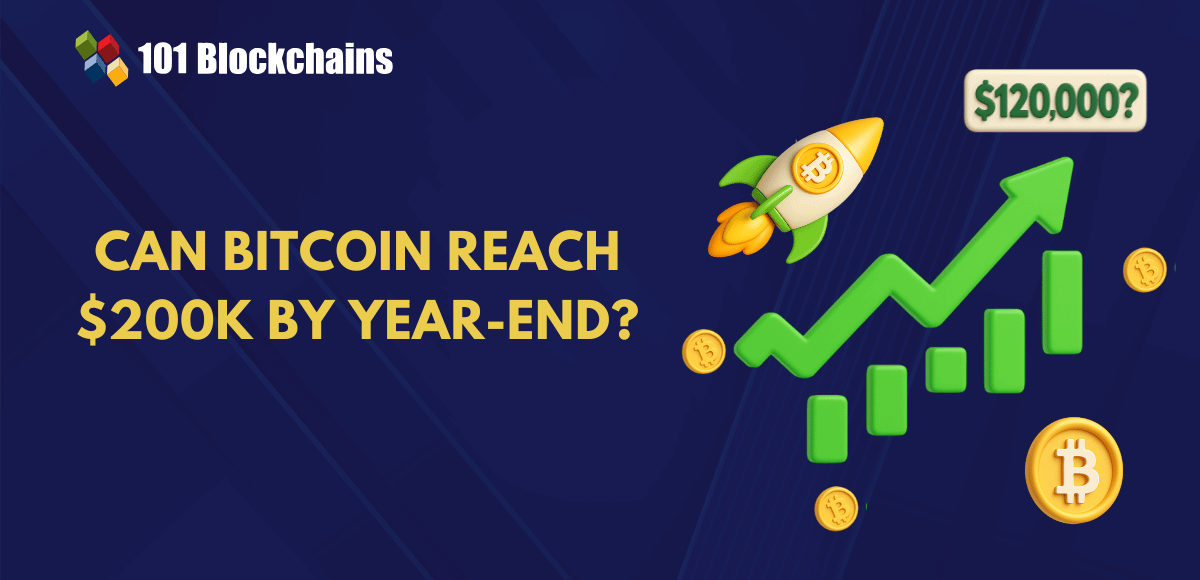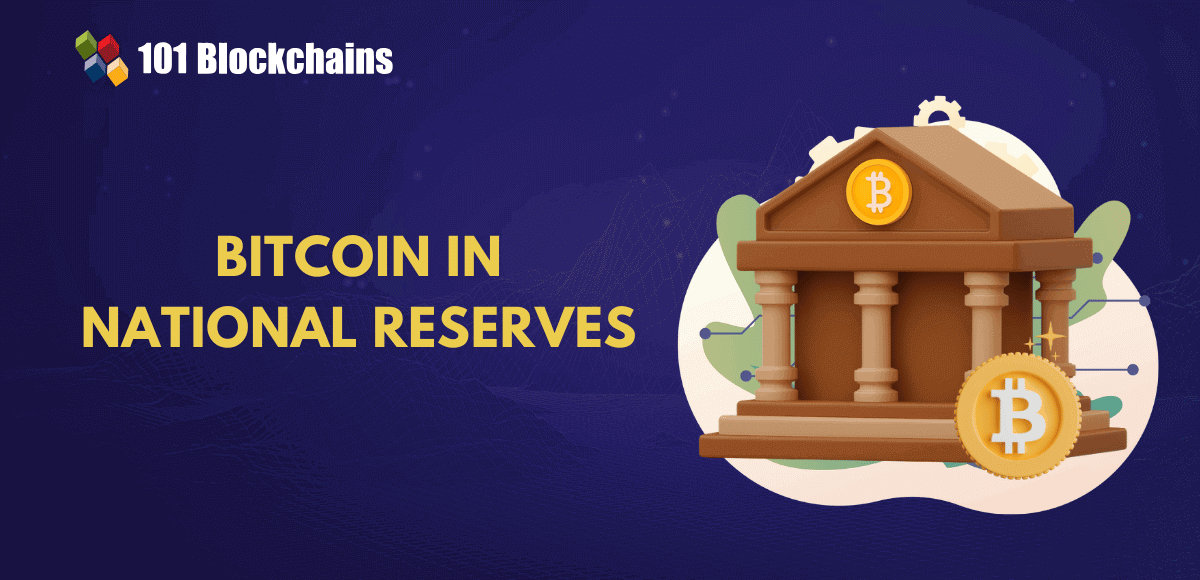Advance your career with in-demand Bitcoin expertise—enroll in the Certified Bitcoin Professional (CBP)™ Certification today.

- Bitcoin
Georgia Weston
- on June 01, 2023
What are Bitcoin Ordinals?
Non-fungible tokens, or NFTs, are the most famous digital assets in the world right now. However, most of them have been created and utilized on blockchain networks such as Ethereum, BNB Smart Chain, and Solana. Interestingly, the fundamentals of Bitcoin Ordinals explained the possibilities for introducing NFTs on the world’s oldest blockchain, i.e., the Bitcoin network. The technical design of Bitcoin makes it impossible to change the code of Bitcoin applications.
It features a decentralized network of developers and nodes who are not willing to risk the security of the Bitcoin network. Therefore, the concept of Bitcoin NFTs never materialized into any actual project. On the contrary, the expansion of the crypto ecosystem has led to the expansion of opportunities for creating Bitcoin NFTs. The following discussion helps you find more information about the fundamentals of Bitcoin Ordinals and how they work.
Enroll now in the Bitcoin Technology Course to learn about Bitcoin mining and the information contained in transactions and blocks.
Definition of Bitcoin Ordinals
Bitcoin Ordinals has become one of the popular highlights in the web3 landscape right now. Casey Rodarmor introduced the project in January 2023 and created divided opinions in the crypto community. What is the ordinals protocol, and what are its special highlights? Bitcoin Ordinals are the fundamental units of Bitcoin, i.e., satoshis or sats, which have been minted and integrated with a unique piece of information.
As a result, the satoshis can become unique and have the same identity as a basic non-fungible token. How can you add text, images, or other digital assets in the lowest denomination of Bitcoin? The answer points to the working of the protocol for enabling inscription on Bitcoin.
The demand for resources to learn Bitcoin applications and the technology behind them has been growing by huge margins. Bitcoin Ordinals have become the next big thing in the world of crypto and web3. In April 2023, the record of daily inscriptions with the use of Ordinals was shattered around four times with growing network activity. Users flooded the network with video games, images, and other types of content.
What is an Inscription?
The definition of Bitcoin Ordinals provides insights into one of the most common highlights of the protocol. Ordinals can help in inscribing a digital asset on the lowest denomination of Bitcoin, i.e., Satoshi. The data you can choose for inscribing on Bitcoin can also feature smart contracts, which can help in representing NFTs.
As a result, inscription enables the creation of Bitcoin NFTs. You can find valid answers to “How are Ordinals different from NFTs?” by referring to the inscription. The Taproot upgrade introduced on the Bitcoin network in November 2021 offered a massive advantage for inscribing on satoshis.
Bitcoin developers have worked hard to introduce NFTs to the Bitcoin network. One of the earliest efforts for bringing non-fungible tokens to Bitcoin points at Counterparty in 2014 and Stacks in 2017. The inscription process primarily helps inscribe data of the content stored in the witness of Bitcoin transactions. Bitcoin network introduced SegWit upgrade in 2017, thereby bringing the witness feature.
Curious to understand the complete smart contract development lifecycle? Join the Standard & Premium Plans and get free access to the Smart Contracts Development Course Now!
The rationale behind Creating Bitcoin Ordinals
The introductory guide to Bitcoin Ordinals must also focus on their work. It is important to note that the origins of Bitcoin Ordinals come from conventional arguments in the Bitcoin community. Should you learn Bitcoin only to use it in financial transactions? No, you can also use Bitcoin as a secure and decentralized network for data storage.
Imagine a scenario where people use Bitcoin as the world reserve currency. It would only create a global financial network without scope for experimental use cases such as inscribing data in the block space. Increased use of block space on Bitcoin in the form of storage space can resolve the security budget problem for Bitcoin.
During the initial phase, Bitcoin allowed the space of around 80 bytes only for messages that could be encoded on blocks by using the OP_RETURN function. However, the feature was not enough to create the Ordinals NFT you want to learn about today. The size limit climbed up to 4 MB after two major hard fork upgrades, Taproot and SegWit, which introduced major improvements. The upgrades helped in offering a unique mechanism for block size measurement, thereby enabling efficient arrangement of transaction data.
Excited to know the use cases of crypto in NFTs, DeFi, and the metaverse, Enroll now in the Cryptocurrency Fundamentals Course
Working of Ordinals
The developer Casey Rodarmor stated that the position of a satoshi or sat on the Bitcoin blockchain is associated with four distinct parameters. The four parameters include an index of satoshi in the block, cycle number, index of the block in the difficult adjustment period and index of the block in the halving epoch. You can learn about the working of Bitcoin Ordinals explained in detail by identifying the balance between these parameters.
The four parameters can help you find out the position of a satoshi on the Bitcoin blockchain, as the first satoshi would be rarer. In the case of NFTs, rare mints have the potential to earn more value from collectors. Therefore, the ordinal ranking of sats can help in verifying how rare a particular Bitcoin NFT is.
The working of Bitcoin Ordinals also involves repurposing the code and utilizing them in the form of envelopes for the data inscribed on satoshis. With a higher block size limit on Bitcoin, the Ordinals protocol can help in inscribing bigger data on satoshis. For example, users can mint their CryptoPunk on Bitcoin with the help of a satoshi.
You can think of ordinals as two similar currency notes of the same value, albeit with one of them having the signatures of LeBron James and Michael Jordan. Remember that you can spend both dollar bills to buy a similar product. On the other hand, you would find a different social recognition for the currency bill with the signatures of famous celebrities.
What is the Special Highlight of Ordinal Inscriptions?
One of the common aspects in the introductions to Bitcoin Ordinals revolves around their classification as non-fungible tokens. Do Bitcoin Ordinals have the traits of NFTs? If they are not the same as NFTs, why are they popular in web3 right now? Non-fungible tokens have been deployed on Ethereum, as it is the popular choice of a blockchain network for smart contract development.
The NFTs on Ethereum were stored as pointers to off-chain data in the Interplanetary File System or IPFS, which is a decentralized file storage system. Casey Rodarmor created the Ordinals Wallet and NFT protocol by focusing on the ability to change the metadata of NFTs. He stated that non-fungible tokens are not complete as they need off-chain data. On the other hand, Ordinals have their data inscribed on-chain, which makes them complete digital assets.
Rodarmor defines Bitcoin Ordinals as digital artifacts rather than Bitcoin NFTs. It is also important to note that digital artifacts like Ordinals do not have the facility of creator royalties. The working of Ordinal Inscriptions does not depend on a separate token or sidechain, as everything happens on the Bitcoin blockchain.
You can find clear answers to “How are Ordinals different from NFTs?” by reflecting on the working of Ordinal Inscriptions. The inscriptions are stored in taproot script-path spend scripts with a specialized Bitcoin transaction. You can create an inscription with two simple steps, such as creating the taproot output featuring the inscription content and spending the output.
Excited to learn the basic and advanced concepts of ethereum technology? Enroll now in Ethereum Technology Course
Unique Traits of Bitcoin Ordinals
The confusion between Bitcoin Ordinals and non-fungible tokens is one of the general pointers in an introduction to Ordinals. You should understand that Ordinals are different from NFTs according to different factors. The term ‘Ordinals NFT’ has gained attention due to the facility for inscribing unique data and smart contracts on satoshi in the Bitcoin network. Here are some of the noticeable aspects which differentiate Bitcoin Ordinals from NFTs.
-
On-chain Minting
The first reason to consider Ordinals separate from NFTs is the storage of actual raw file data in the Bitcoin blockchain. Non-fungible tokens on Ethereum and other chains feature reference points to the files, which can be hosted anywhere. For example, NFTs can point to an actual artwork being sold in a gallery.
-
Inscription vs. Tokenization
The biggest difference between Bitcoin Ordinals and NFTs is an inscription. Some may assume that Bitcoin Ordinals are NFTs, as they feature unique data such as text, audio, and video files. On the other hand, the basics of an Ordinals Wallet would show you that Ordinals have the file data with direct inscription on the Bitcoin blockchain. Non-fungible tokens are created through tokenization by creating completely new tokens on different blockchain networks.
Want to learn the fundamentals of tokenization? Enroll Now in Tokenization Fundamentals Course
-
Smart Contract Functionality
The difference between Bitcoin Ordinals and NFTs would also point to the lack of smart contract functionality in Bitcoin. Therefore, trading Bitcoin Ordinals can be a difficult task without the facility of decentralized exchanges, efficient UI, and accessibility of wallets. Therefore, it is possible the trade Bitcoin Ordinals only through the Over the Counter or OTC trading model.
Interestingly, the Ordinals NFT divide on the basis of smart contract functionality has not stopped users from adopting the project. The example of the gold rush into the Ordinals’ ecosystem in a short period of time provides an explanation of why you must learn about Ordinals.
-
Concurrency Issues
Another prominent highlight in an introduction on Bitcoin Ordinals explained for beginners would point at possibilities of concurrency issues. The inscription has opened the scope for adding multiple inscriptions to Satoshi units. On the contrary, non-fungible tokens or NFTs correspond to a specific digital or real asset. The concerns of multi-vector NFTs could turn into a reality with Bitcoin Ordinals.
Embrace the technological leap and global adoption that awaits in the upcoming bull run of 2024-2025 with Crypto Bull Run Ready Career Path.
Examples of Renowned Bitcoin NFT Collections
The introduction to Bitcoin Ordinals would also require insights into the examples of popular collections in the project. Here is an outline of some of the most popular Bitcoin NFT collections introduced through Bitcoin Ordinals.
-
Ordinal Punks
The first example of Bitcoin Ordinals application for NFTs would point at Ordinal Punks. It is a collection featuring 100 Bitcoin Ordinals, which pay tribute to the CryptoPunks NFT collection. The unique detail of Ordinal Punks refers to using an open-source algorithm for generating the PFPs. The project creator manages the bids and asking prices for the Ordinal Punks through a Google Sheet. Project creators have to take on the identity of escrow managers, and they can monitor and track transactions through Discord.
-
TwelveFold
The most popular Bitcoin Ordinals collection is TwelveFold by the team behind Bored Ape Yacht Club or BAYC NFTs. Yuga Labs have come up with the limited edition Ordinals collection with around 300 units of generative art. The generative art NFTs combine 3D graphics alongside hand-drawn features.
If you want to learn about an Ordinals Wallet application, you must know how TwelveFold aims to explore the relationship between blockchain, time, and mathematics. The first auction for TwelveFold spanned almost 24 hours with around 3246 bids ranging from $50,000 to $150,000.
Start learning Non-Fungible Token with World’s first NFT Skill Path with quality resources tailored by industry experts Now!
-
Ordinal Loops
The next example of Bitcoin Ordinals collection points at Ordinal Loops. It is a popular offering that features a unique NFT known as Object 0. The NFT features dynamic generative art, which rotates along with its characteristic mathematical torus design. Object 0 is one of the additions in the first series by the Ordinal Loops team with the existing narrative titled “Do Not Fiat.”
-
Taproot Wizards
Examples of Ordinal’s NFT collection would also include Taproot Wizards. It is an Ordinal collection developed by the independent web3 creator Udi Wertheimer on the Bitcoin network. The developers have started the collection with Inscription 652, and each wizard in the Taproot Wizards collection is a unique NFT drawn by Udi. The Taproot Wizards collection taps into the immutability of Bitcoin for the secure storage of unique digital artifacts.
Learn the fundamentals, challenges and use cases of Web3.0 blockchain from the E-book: AN INTRODUCTION TO WEB 3.0 BLOCKCHAIN
Conclusion
The introductory outline to Bitcoin Ordinals explained the ways in which non-fungible tokens can come to the Bitcoin blockchain. Traditionally, Ethereum and other blockchains have been the top choices for NFT creation and deployment. However, the growth of innovation in the crypto and web3 landscape has led to a profound rise in the search for new ways to introduce NFTs to the Bitcoin network. Bitcoin Ordinals uses a unique mechanism, inscription, for adding unique data to the lowest denomination of Bitcoin, i.e., satoshi. Learn more about Bitcoin Ordinals and how you can create and trade your own Bitcoin Ordinals collection right now.
*Disclaimer: The article should not be taken as, and is not intended to provide any investment advice. Claims made in this article do not constitute investment advice and should not be taken as such. 101 Blockchains shall not be responsible for any loss sustained by any person who relies on this article. Do your own research!







